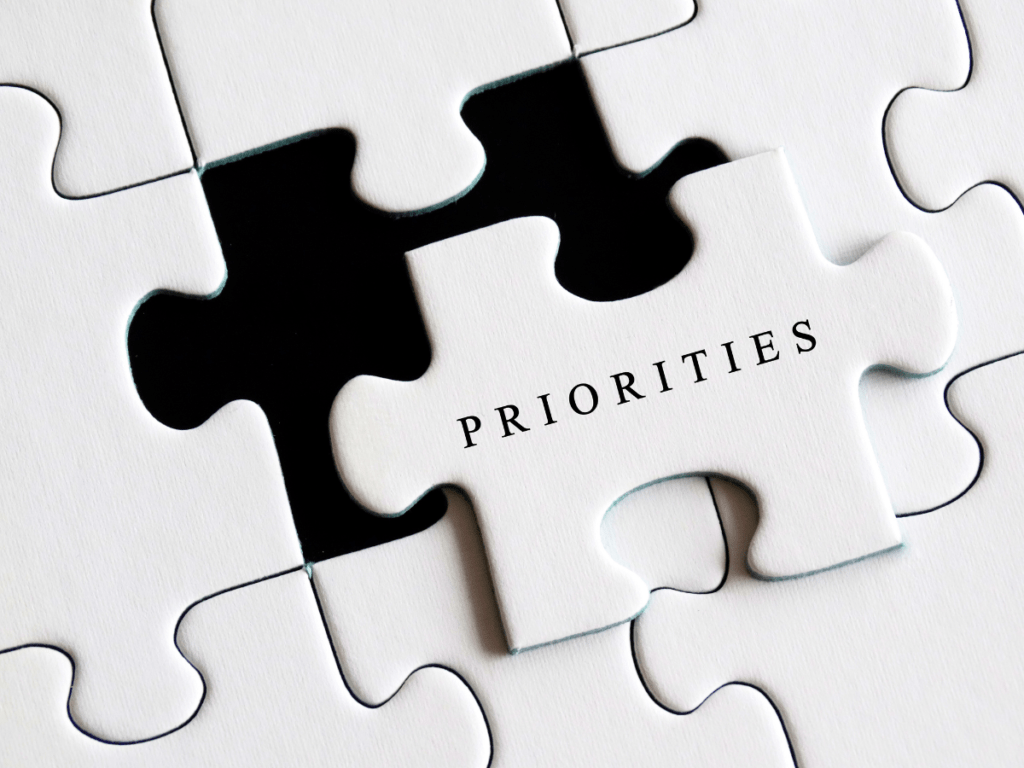I should probably start by clarifying that just because something is simple, doesn’t mean that it is easy. In fact, the only easy thing is slipping back onto society’s path to misery and just do what everyone else does. It’s incredibly easy to live a robotic and mindless life, just don’t expect to be happy.
Becoming truly happy comes down to a number of factors including self-knowledge and self- awareness, confronting conventional “wisdom,” taking meaningful action, being in control and living with purpose.
Quite frankly, when laid out like that it’s utterly overwhelming. That’s certainly how I felt when I started on this journey in October of 2019. And yes, I can nail it down that precisely!
Since then, I have consumed thousands of books, articles, blogs, videos, podcasts and documentaries on happiness, self-discovery, reinvention, financial independence, minimalism and mindfulness. For someone like me from a provincial English town and who has very average levels of intellect, it was daunting to say the least.
Fortunately, if I have one talent, it is the ability to simplify the complex into something that can easily be understood by others who are just like me. Over a period of three years I have come-up with a simple roadmap which can guide anyone towards a happier, more fulfilling, and less stressful life. Why not give it a try?
Table of Contents
Step 1 – Create your Happiness Statement

What I mean by this is identifying what makes you truly happy and, conversely, what causes you stress and makes you unhappy. You need to document this, and you may be surprised how long it takes you to do this properly.
Firstly, think about a time when you felt truly happy. It may be a general period in your life or a specific event. I call this a “happiness event.” Write it down and then underneath jot down all the reasons why you think you were so happy. These reasons might include who you were with, what you were doing or some issue that was no longer affecting you negatively.
If you find some of your reasons are intangible, you need to drill down until you find the quantifiable reason. For example, you might identify a lack of stress as contributing to your happiness, so then you need to ask yourself why you felt stress free. Maybe you have recently left a toxic work environment, and that subsequently made you feel happy.
Repeat for every blissful time and event you can recall.
Now conduct a similar exercise, but this time remember all the times when you felt particularly unhappy or miserable. What were the factors that contributed to your unhappiness? This can be even more challenging, as it is easy to miss the primary factors. Take as an example, you have had a really miserable day at work, and you come home, and your spouse does something to annoy you. Thanks to a classic case of emotional leakage, you overreact and become extremely irate. Was it your spouse’s behaviour that drove your unhappiness or was it something that happened at work?
When you complete this, delete or cross out all the descriptions of the happiness events so that only the reasons remain. Put the list away for 24 hours and try not to think about it. You want to attempt to reduce the emotions that may have been stirred by reflecting on the past, especially the unhappy times.
When you go back to your list, analyse the reasons you wrote down. Identify, the factors that seem to consistently drive happiness or unhappiness, looking for trends. Once you have done this, you can write your personal happiness statement. This is mine:
I am happy when:
- I share simple pleasures with close family: my wife, son, parents, even my idiot brother.
- I am able to spend some time alone
- I have the freedom that allows me to have control over my time
- I contribute to society in a useful way through a job I enjoy and/or other things I do
Notice that it didn’t mention spending extra time at work or deciding which of my five gold-plated toilet seats to use. What is important is that you describe tangible factors and not feelings. Instead of saying that you are happy when you are relaxed, write that you are happy when relaxing by reading and listening to music.
Your happiness statement is a living document, and you should update it each time you experience a new happiness event, or you recall a significant historical event. Nevertheless, you should still conduct regular reviews.
Initially, I would conduct a review every six months, and after a couple of years lengthen this to annual reviews of my happiness statement. It’s simply that I have reached the point where I feel that I have a much better understanding of what makes me happy.
Step 2 - Reassess your Life Priorities

Most of us are on a journey that is driven by an unthinking desire to meet goals and expectations we’ve mindlessly absorbed from society, our family, and friends. This typically means becoming “successful” as defined by other people. You need to have a great job, a flash car, an expensive home. I know many people who are “successful,” and they are miserable.
I’ve been successful too and it was utterly exhausting. I stayed in a high-paying job that I grew to detest for almost 4 years longer than I should, just so I could maintain the illusion of success. When I audited my life by comparing it to my happiness statement, I came to the realization that far from being successful, I was a failure.
This realization was important, as it allowed me to start my journey towards true success by disregarding the priorities and behaviours that were contributing massively to my negative state of mind.
Step 3 - Escape the Debt Trap

The most common factor preventing happiness is debt. I’m not saying that it’s universal, but I’ve yet to meet someone who is struggling to find happiness who isn’t hampered by debt.
I use the term “debt trap” because you are typically trapped having to work, often in an unsatisfying job that you may grow to hate simply because you need to service your debt load. You might want to travel, but you are trapped because you can’t take the time, as you have to work to make your payments.
The first thing is to stop your debt from growing. Create a budget and stick to it. We use a budget app to track our expenditure, and when we reviewed our expenditures over the first full month it was frightening, yet powerful knowledge. Armed with this we set about creating a monthly budget.
To be frank it took us a few months for us to make a budget that worked, but from the second month, even with our imperfect budget, our spending declined significantly. There seems to be something about having to enter the details of a purchase in your phone that makes you think twice.
Nerd Wallet recommends eight different budget app options. We use YNAB (You Need a Budget) and have been very satisfied with how it has worked for us. Of course, as we haven’t tried any of the others, we can’t comment on how it stacks up against them.
At the same time as you start getting your expenditure under control, begin the process of ridding yourself of debt. We use Dave Ramsay’s debt snowball technique as it’s easy to follow and it works, or at least it does for us and has for many thousands of other people. Just follow these simple steps.
- List your debts in order from smallest to biggest.
- Pay off the smallest as quickly as you can while making minimum payment on the rest.
- Once you pay-off one, start on the next smallest and so on until all are paid off.
It works because you get some fairly quick reward when the first debt is killed off, which really helps you get momentum and stay the course. To read more about the debt snowball, go to the Ramsay Solutions website.
Step 4 - Simplify your Life

After beginning your journey with the first three steps, you will probably notice your life becoming noticeably simpler.
This is inevitable, as most people who lead simple lives tend to be happier than the rest of us. Now it’s time to speed up the process and become proactive about simplifying your life.
You can begin with your possessions. You will be amazed at how free you will feel as you reduce the weight of the stuff that you have collected over the years. The best way is to start small. Focus on one room or one type of possession, such as clothes or books. As you finish that one, move on to another. But, be warned, it can become addictive.
Some of our friends think that we are minimalists, but it’s not true. What happened is that when we moved from our apartment to our much larger house, we made a concerted effort not to allow our larger home to provoke “stuff-creep,” the accumulation of possessions to fill the larger space available.
How about downsizing your life completely? This could mean not upgrading to the newest model phone just because your current one is two years old. Maybe you should skip buying a new car once you have finished paying off your old one. If the old one works fine why would you? At a more extreme level moving into a smaller home in a cheaper city. If you now have less stuff it might be possible.
For more great tips from The Minimalists on decluttering your home and life visit their website.
Step 5 - Practice Mindfulness

I won’t lie to you, for years I thought that meditation was something for weirdos and the weak-minded. Then when I did try meditating for a few days, I gave up because I didn’t experience the instant enlightenment I was expecting. When I look back, it’s embarrassing. These days I meditate every day, and have done so for almost two years.
The big moment for me was picking up "10% Happier" by Dan Harris at an airport bookshop. Six hours later I reached my destination a changed and, I think, better man. The message is simple: practising meditation and mindfulness will make you at least 10 percent happier. Your problems won’t go away, but you will be much better able to handle them.
I think what makes the book so powerful is the fact that it’s not written by a yogi or psychology professor, but by a TV news anchor who famously had a very public panic attack in the living room of millions of Americans.
Each morning, after my wife Monique and I finish our morning walk and exercises, I spend 15 minutes meditating. I’m still not very good at it, but I genuinely believe that I hit the 10% threshold at least a year ago. You can find 10% Happier at all good bookshops and on Amazon.
Step 6 - Live an Intentional Life

I recently took the Myers-Briggs personability test and I was categorized as INTJ-A or an Assertive Architect. If you are familiar with Myers-Briggs, you’ll know that I don’t just love to plan, I need to plan. I don’t spend a day doing nothing, I PLAN to spend the day doing nothing, which is about as chill as it gets for me.
What I have come to realize is that an endless series of plans, many of them unrelated to the others, doesn’t mean that I was living an intentional life. To live intentionally requires living a life guided by a core set of principles. Some call it living a purposeful life.
If I had put this at the top of this post it would have been disheartening. However, if you have started your journey with Steps 1 through 5, it should make sense. You know that you can live a life where you:
- Focus on your happiness statement
- Understand your true priorities
- Strive towards financial freedom
- Keep things simple
- Include daily meditation and mindfulness
Do this and you will inevitably find yourself living an intentional life, one that becomes increasingly intentional with each passing day.
If you want to learn a little more about yourself, and I recommend that you do, you should invest 10 minutes of your time taking the Briggs-Myers test.
I said at the beginning that the steps towards living a happier life were simple, in that they are straightforward to comprehend, but they aren’t all easy. What’s hardest is moving past societal norms. It can be tough watching your neighbour head to work in their brand-new Audi, as you get into your six-year-old Toyota, even if you have the satisfaction of knowing that you’re not committed to several years of payments.
This is why I recommend that you go at your own pace, which might be sluggish and leisurely. What you can do over the coming weeks is to tackle Steps 1 and 2, as they are foundational and don’t require any tangible change, and then see how things go.
The thing I ask of you is to be patient. This is not a quick fix, but if you tackle the six steps methodically and gradually, you are sure to experience a positive shift in your general mood and mental well-being.
Have you been struggling to find happiness? What do you think of this 6-step plan towards happiness? Drop us a comment below.
Author
Nick Abbott
Hi, I’m Nick. Visiting foreign countries has been an important part of my life since my parents moved to Kano in Nigeria in 1977. Since then, as both a military officer and in later jobs I have enjoyed the huge privilege of being exposed to many different countries and cultures.
I am delighted to be able to support my wife Monique and Yes2Yolo primarily by contributing travel articles, providing editing and proof-reading services and being a general sounding board.




What an absoluetly timely article. Just what I needed! Nick you did such a great job in laying out the 6 steps to happiness. Gonna get started on my happiness statement!
Thanks Peta-Gay, that sounds really great…hope it works out for you and do let us know how it goes!
Thank you Nick. Very well received. I love the budget app idea. I know this will work for me and I definitely will be giving my progress reports/ updates.
Thank you for the positive feedback Taña. I am very optimistic that the budget app will work for you…it certainly has been working for us! Good luck!